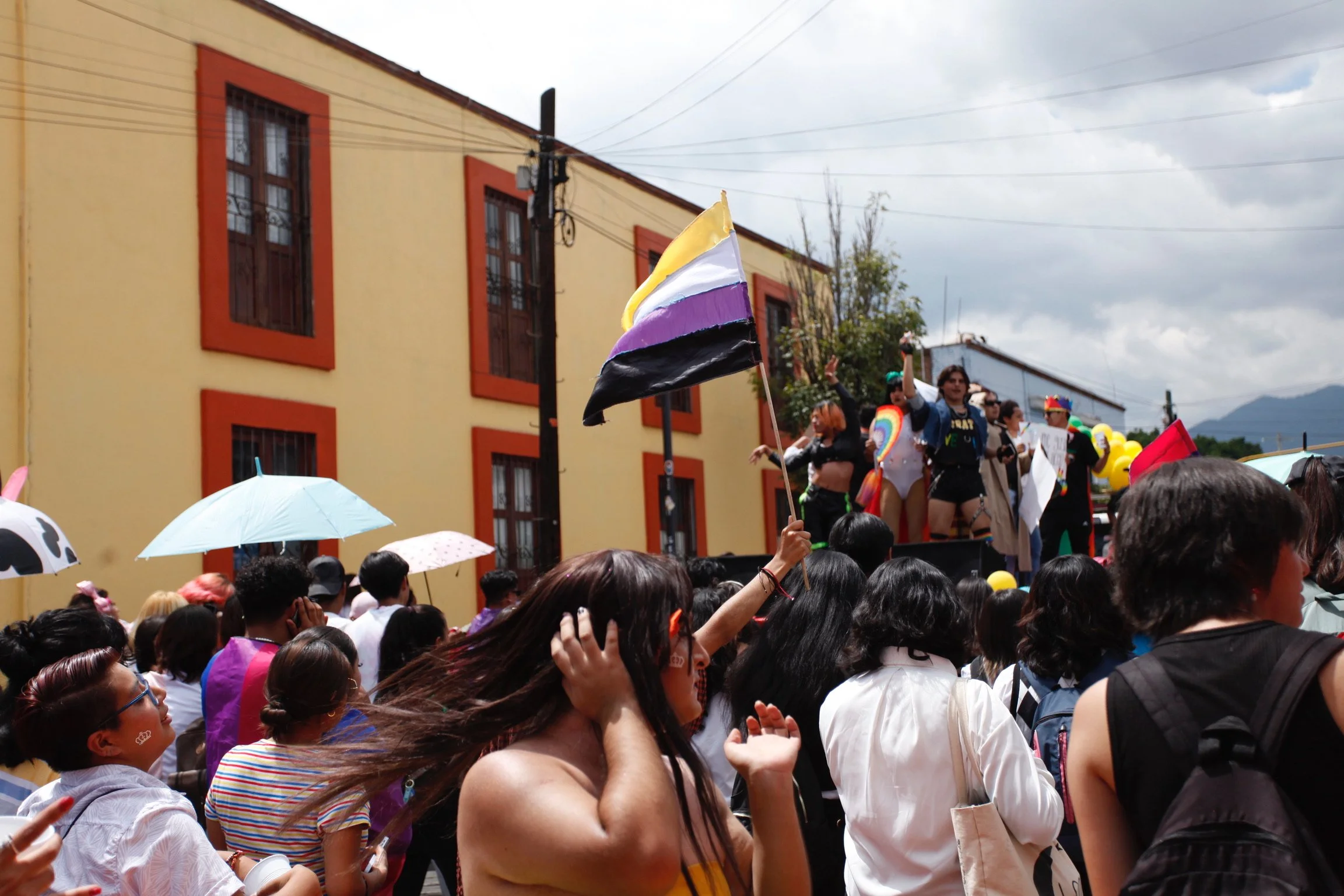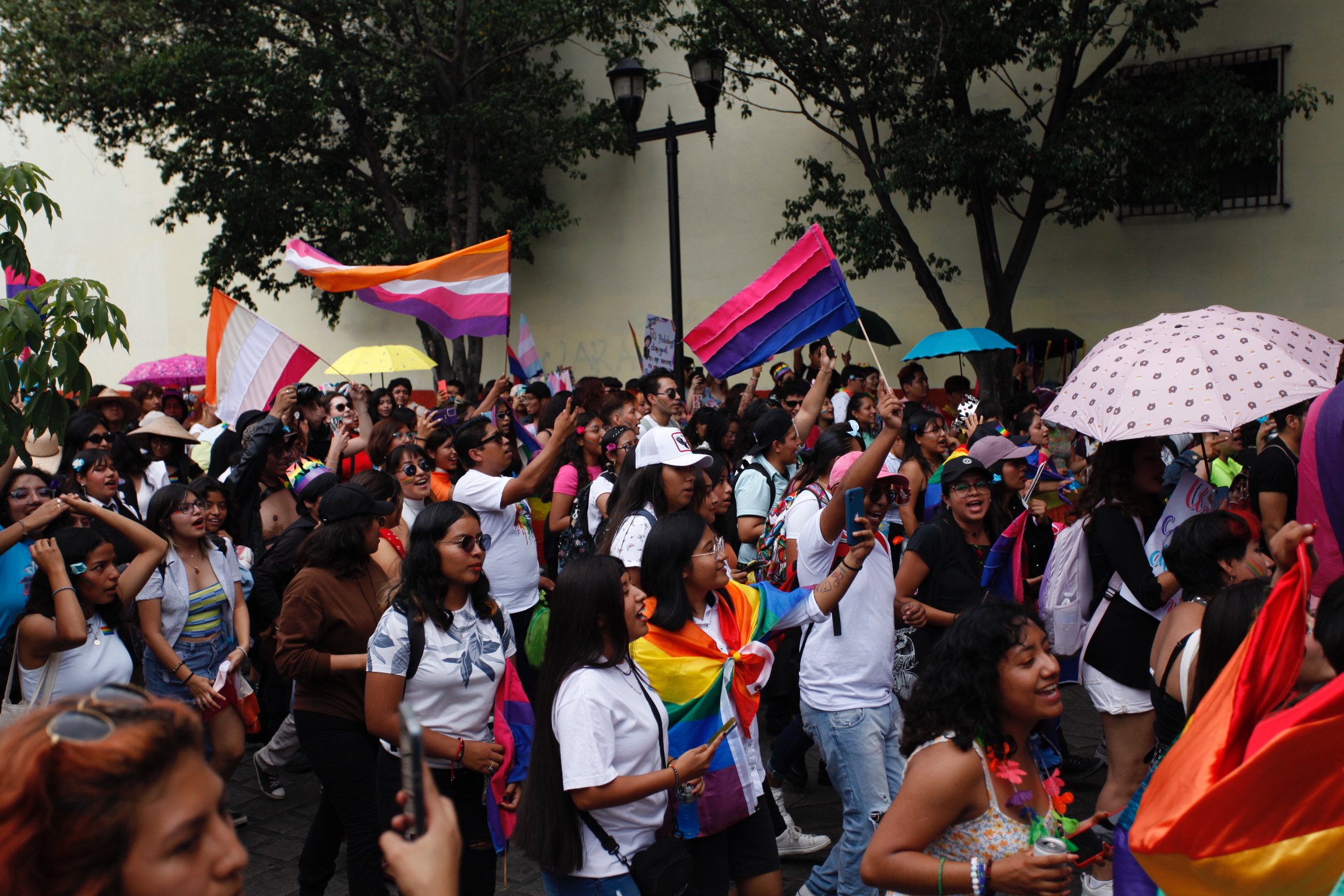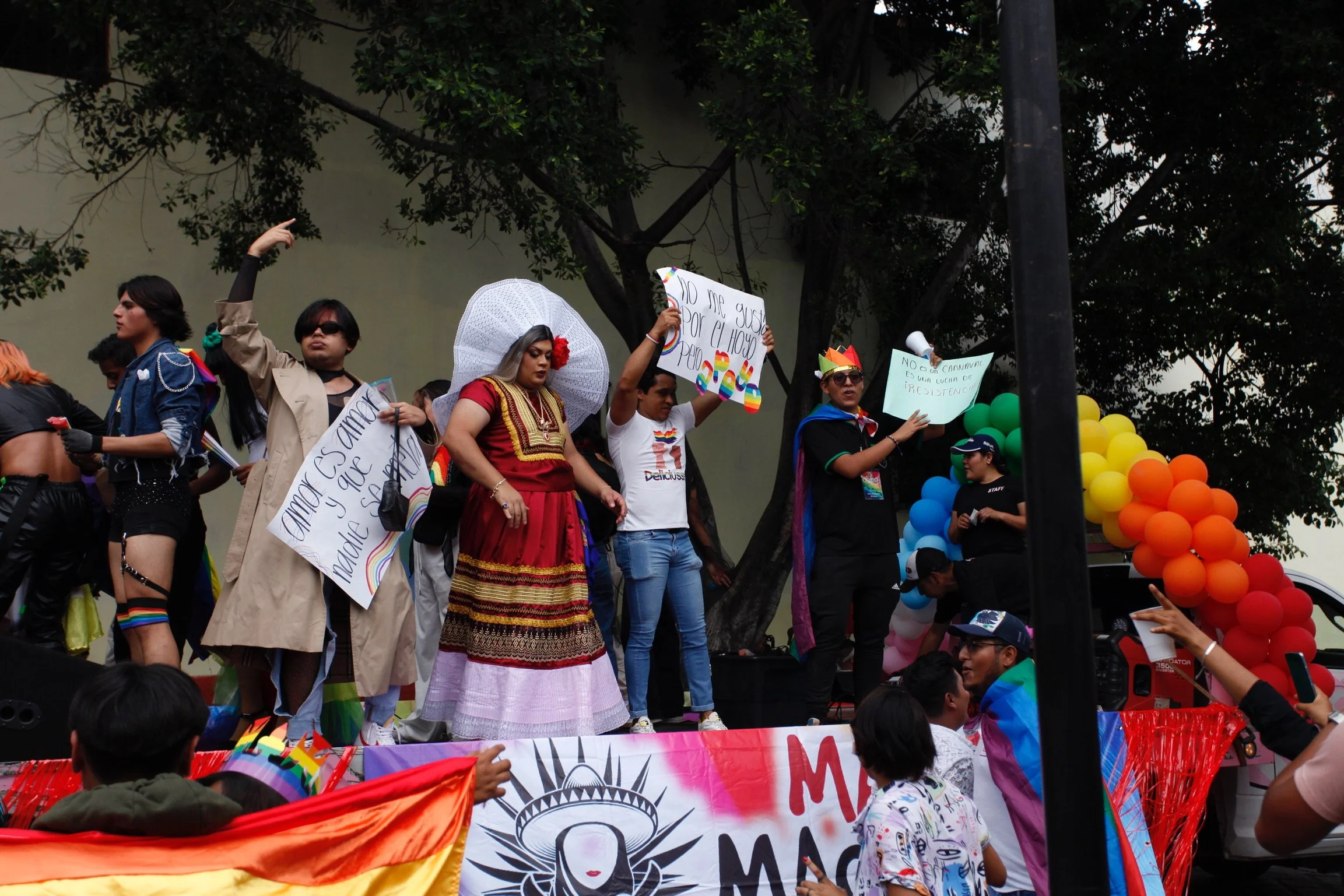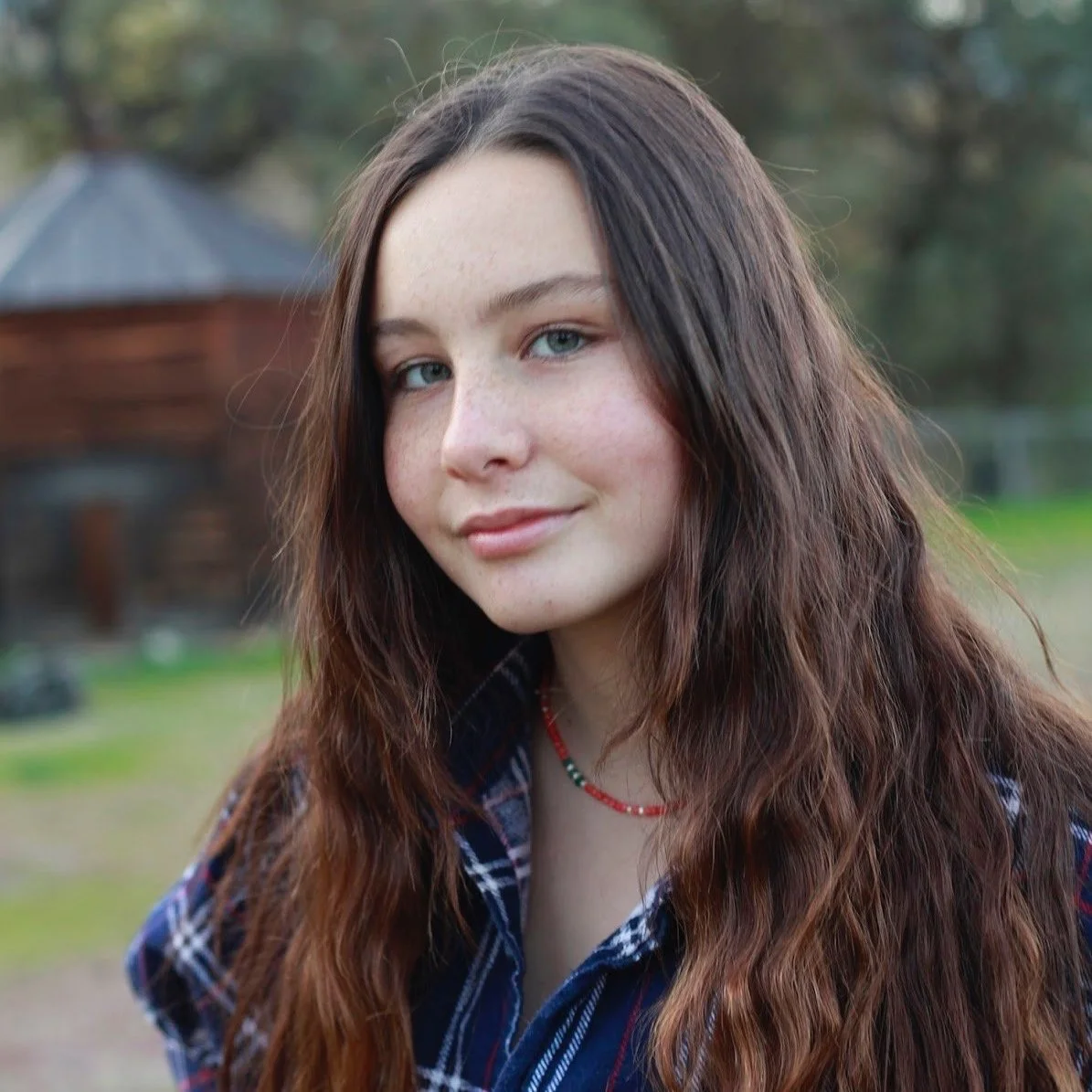Color and culture unite in the streets of Mexico’s Oaxaca.
People dancing during parade. Imogen Volland.
It was an overcast day late June, but downtown Oaxaca was anything but dreary. The cobblestone streets were an explosion of laughter and music, the adobe buildings adorned with flags and banners. The parade was a party and everyone was invited. We weaved our way through the bustling streets, singing along to the Selena song blasting from a nearby speaker, passing by bakeries, bars, markets and boutiques.
Last year, I had the privilege of attending Oaxaca’s annual pride parade, which attracts hundreds of locals and tourists alike. Located in southwestern Mexico, Oaxaca is nestled in the Sierra Madre mountain range. The region is renowned for its mouthwatering cuisine, including mole, tlayuda, enfrijoladas and chocolate. It also boasts a vibrant arts scene. The winding streets are adorned with murals, and the region is famous for its handicrafts including candle making, pottery and embroidery. Even with a population of over 300,000, Oaxaca feels like a small town. With pride month expanding worldwide, corporations are finding new ways to capitalize off of the movement, however, the pride parade in Oaxaca is not commercially sponsored. It’s a community effort, celebrating inclusivity, unity and belonging in a historically Catholic country.
People carrying flags during parade. Imogen Volland.
Historically occupied by the Zapotec and Mixtec tribes, Oaxaca has a rich culture steeped in indigenous heritage, celebrated during the Guelaguetza festival in July. The Zapotecs occupied Oaxaca from 500 BCE to 900 CE and were followed by the Mixtecs around 1350 CE. Zapotec culture is unique in that it wasn’t rooted in conquest, and masculinity was associated with more “feminine” hobbies like art, craftsmanship and dance. A third gender is recognized in Zapotec culture, the muxe (also spelled muxhe), people who were assigned male at birth who dress or behave more “feminine.” Gender non-conformity in non-Western cultures dates back centuries. The two-gender binary system prevalent in Western cultures was a product of colonization and imperialism, in which Indigenous tribes were forced to surrender their cultural traditions, including the acknowledgement of a third gender. The Muxe still occupy Oaxaca today, defying heteronormative standards and carrying on the Zapotec tradition.
In 2012, the Supreme Court overturned a law preventing same-sex marriages in Oaxaca. Since the legalization of same-sex marriage across all of Mexico in 2022, Oaxaca has rapidly become one of the country’s most gay-friendly hotspots, featuring a variety of gay-owned and gay-friendly shops, restaurants and bars. Cuizzita Cafe is a queer-owned, community-oriented coffee shop with a casual, comfortable atmosphere, offering board games, puzzles and books for customers to use. Club 502 is Oaxaca’s first gay club with mixed drinks, dancing, karaoke and drag shows. Confetti Pool Club is a queer-owned hostel with a pool, swim-up bar, rooftop seating and live music. The hostel is a six-minute walk from the Mitla archeological site.
People carrying posters on platform. Imogen Volland.
This year, Oaxaca’s annual pride parade will be held on Saturday, June 22 at 3 p.m. from the Fuente de las Ocho Regiones. For more information about the parade, as well as other upcoming pride events in Mexico, follow the link here. For a celebration of life, and of love, I highly recommend visiting Oaxaca this June. Happy Pride Month!
Agnes Volland
Agnes is a student at UC Berkeley majoring in Interdisciplinary Studies and minoring in Creative Writing, with a research focus on road trip culture in America. She currently writes for BARE Magazine and Caravan Travel & Style Magazine. She is working on a novel that follows two sisters as they road trip down Highway 40, from California to Oklahoma. In the future, she hopes to pursue a career in journalism, publishing, or research.







